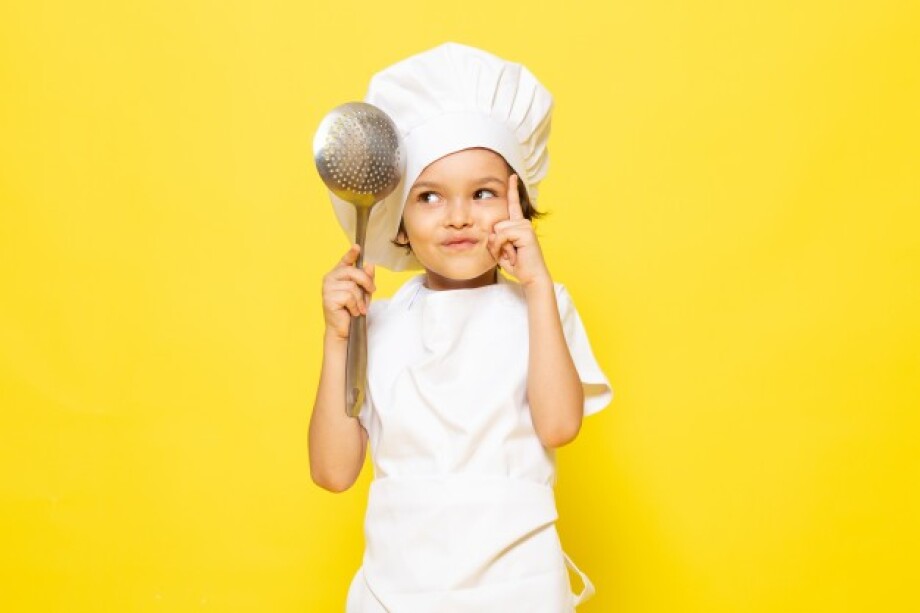Books on plates: Turning Children’s Books into Fun Cooking lessons

Every lesson teachers try to surprise their young students with some new games or activities. Children’s picture books are great resources for any lessons. They are the foundation of what they read for the rest of their lives. They can help teach kids how to read and introduce them to new stories and vocabulary. They have beautiful illustrations that catch their attention immediately. If working with books (shared reading, retelling stories, role-playing dialogues) is not enough, implement the CLIL method and try out cooking lessons so that YLs learn about healthy food, how to prepare basic dishes and so on.
What do Reading and Cooking Lessons look like?
The procedure is the following:
- Working with the book: pre-teaching new vocabulary, reading the book, doing after reading tasks.
- Using flashcards or plastic toys to «cook» the dish. It is a rehearsal of real cooking.
- Cooking the dish at home or in the classroom. If students cook at home, they take photos, write a journal or reviews and bring them to the classroom. If you cook in the classroom, let your students bring ingredients or go shopping together.
What books to take?
Below you can see the list of books suitable for cooking lessons with students aged 4 to 9.
Pete the Cat makes one giant, tasty sandwich for lunch.
What to cook?
A sandwich, no doubt. Find materials for the lesson here.
Pete invites the gang over to share his awesome pepperoni pizza. But when no one else agrees with Pete’s choice of toppings, they try adding their own.
What to cook?
Make mini pizzas (download worksheet) while singing the «Pizza party» song.
You can use a magnetic pizza board to rehearse cooking.
Before his transformation into a butterfly, a caterpillar eats strawberries, oranges, chocolate cake, ice cream, a pickle, Swiss cheese, salami, a lollipop, cherry pie, sausage, a cupcake, watermelon, and a single leaf—all in a weekend.
What to cook?
Snacks on sticks. The caterpillar eats holes through the middle of lots of foods. You can keep the authenticity by skewering your young readers’ favourite healthy snacks. These skewers are an easy and portable way to get a pick-me-up with fruit and cheese without the fork and bowl.
It is a classic folktale of ingenuity and community. In the story, strangers introduce «stone soup» to an unfamiliar town, luring the curious locals to ask about the boiling pot and contribute an ingredient to it. It’s a great book for teaching young people about the cooking process—and how small parts can make up a greater whole.
Find the reading activities here or “Oxford Discover, Student book 1” p.98-100.
What to cook?
Stone soup is, at its essence, classic vegetable soup. Have fun with the process! Here is the recipe.
It is a delightful story of an old-fashioned breakfast started from scratch. Jack wakes up hungry. What does he want for breakfast? A big pancake! But first, Jack’s mother needs flour from the mill, an egg from the black hen, milk from the spotted cow, butter churned from fresh cream, and firewood for the stove.
What to cook?
Pancakes with different toppings (download presentation).
In Judi and Ron Barrett’s richly imagined town of Chewandswallow, the locals live off the weather. It rains soup, snows mashed potatoes, and hamburgers blow into town with the wind.
The adapted resource is available here.
What to cook?
Any dish for breakfast, lunch or dinner.
A boy gives a cookie to a mouse. The mouse asks for a glass of milk. He then requests a straw (to drink the milk), a mirror (to avoid a milk moustache), nail scissors (to trim his hair in the mirror), and a broom (to sweep up his hair trimmings). Next, he wants to take a nap, have a story read to him, draw a picture, and hang the drawing on the refrigerator. Looking at the refrigerator makes him thirsty, so the mouse asks for a glass of milk. The circle is complete when he wants a cookie to go with it. That all starts with just one cookie.
What to cook?
Here’s a chocolate chip cookie that will satisfy every student.
Dr. Seuss’s timeless tale starring picky eater Sam I Am is an excellent primer for beginning readers—and eaters. Sam poetically refuses to eat green eggs and ham everywhere until he tries them, likes them, and vows to eat them anywhere.
What to cook?
Your students will love snacking on these deviled eggs featuring avocado and prosciutto.
Have tasty lessons!
Speaking activities are, obviously, essential for English language speaking classes. A lot of students join classes particularly to develop their communicative competence, become more fluent, versatile, adaptable, and confident communicators in English. However, designing speaking activities might be time-consuming and nerve-wracking for any teacher. We have prepared a memo with superb ready-made speaking tasks that will make your student talking. Download it here.





 Маргарита Аветисян
Маргарита Аветисян 
 Вероника Аветисян
Вероника Аветисян 


